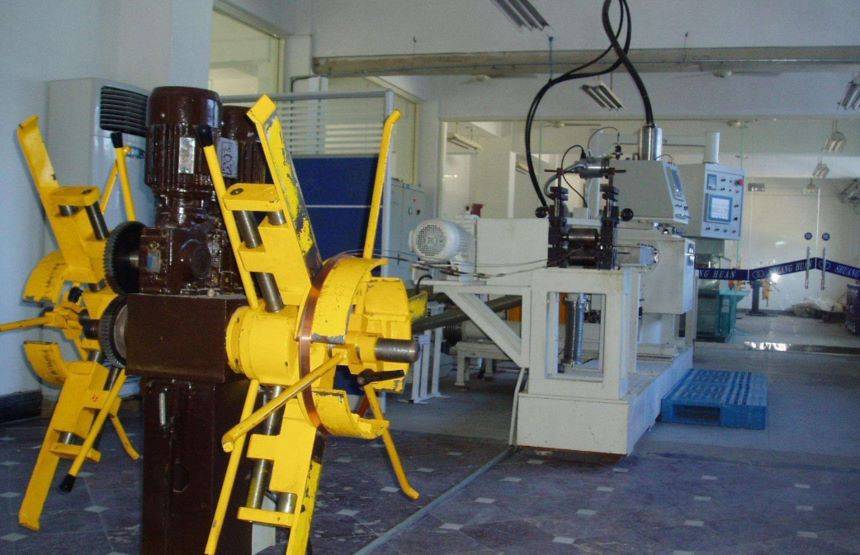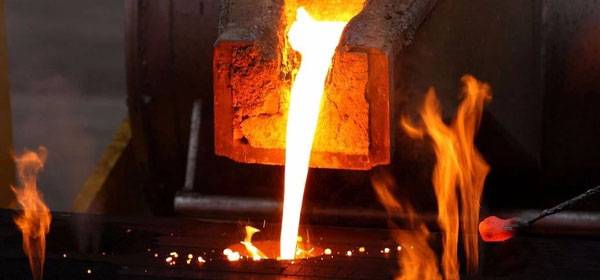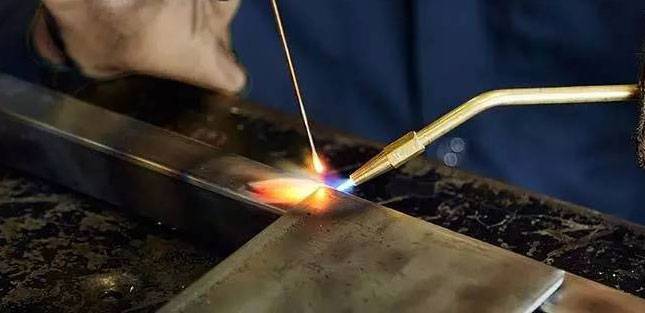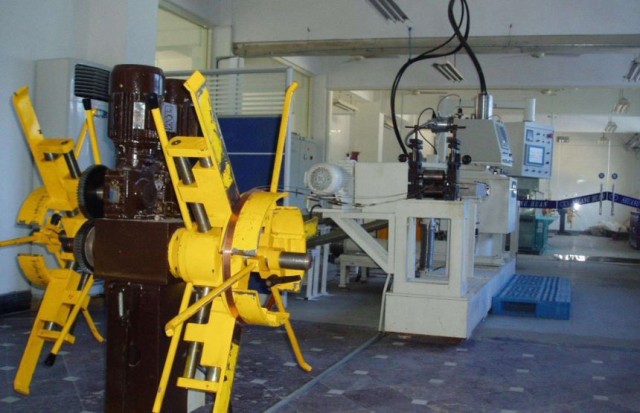Classification of High-Temperature Vacuum Furnaces
Resistance Type High-Temperature Vacuum Furnace
The resistance type high-temperature vacuum furnace operates by employing electric heating wires to generate heat, which is then transferred to the material through radiation. This method is particularly effective for the heating and treatment of a wide array of materials, ensuring uniform heating across the entire workpiece. The vacuum atmosphere within these furnaces plays a crucial role in preventing oxidation, thereby preserving the integrity and quality of the materials being processed.
One of the standout features of this type of furnace is its ability to maintain a vacuum environment, which is essential for applications requiring ultra-high temperatures, often exceeding 2000°C. This capability has historically been a domain monopolized by advanced industrial nations like Japan, Europe, and the United States, due to the stringent technical requirements placed on the hot zone and associated protective measures.
| Feature | Description |
|---|---|
| Heat Generation | Electric heating wires generate heat through resistance. |
| Heat Transfer | Heat is conducted to the material via radiation. |
| Vacuum Environment | Maintains a vacuum to prevent oxidation and ensure material integrity. |
| Temperature Range | Capable of operating at temperatures up to 3000°C. |
| Application | Ideal for various industrial processes including sintering, brazing, and annealing. |
The resistance type high-temperature vacuum furnace is not only versatile but also critical in producing high-quality materials with consistent properties. Its design ensures that the materials undergo minimal contamination, enhancing the overall efficiency and reliability of the industrial processes it supports.
Induction High-Temperature Vacuum Furnace
The induction high-temperature vacuum furnace harnesses the power of electromagnetic induction to generate heat, making it an ideal solution for the precise melting and casting of metal materials. This technology leverages the principles of medium frequency induction heating, creating a high vacuum environment where metals can be melted without exposure to atmospheric contaminants. This method is particularly effective for materials that require high purity, such as nickel, special steel, precision alloys, active metals, high-temperature alloys, and magnetic materials.
In addition to its applications in large-scale production, the induction high-temperature vacuum furnace is also suitable for the vacuum precision casting of small parts. For research purposes, it can be used to melt and heat treat small quantities of samples, facilitating phase diagram studies. The equipment is typically equipped with a stainless steel water-cooled chamber and a quartz observation window, allowing for real-time monitoring of the melting process. A high vacuum molecular pumping unit is often included to enhance the vacuum degree of the substrate, thereby improving the overall quality of the melted material.
The convenience of operation is further enhanced by the inclusion of a lifting platform and turning handle, which streamline the casting and sampling operations post-melting. This comprehensive setup ensures that the induction high-temperature vacuum furnace is not only versatile but also user-friendly, making it a valuable tool in both industrial and research settings.
Electron Beam High-Temperature Vacuum Furnace
The Electron Beam High-Temperature Vacuum Furnace operates on a unique principle, utilizing high-speed electron flow to bombard the surface of materials, thereby generating intense heat. This method is particularly effective for surface treatment of metal materials and the preparation of thin films. The electron beam, accelerated to high velocities, imparts significant kinetic energy upon impact, converting this energy into heat almost instantaneously. This rapid heating process allows for precise control over the temperature and depth of heat application, making it ideal for applications requiring fine surface modifications.
For metal materials, this technique can significantly enhance surface hardness, wear resistance, and corrosion resistance. The vacuum environment ensures that the metal surfaces remain free from oxidation and contamination, preserving their integrity and purity. Additionally, the Electron Beam High-Temperature Vacuum Furnace is invaluable in the production of high-quality thin films, where the precise control over temperature and the absence of atmospheric contaminants are crucial. These films are often used in advanced technologies such as semiconductors, optics, and various industrial coatings.

The versatility of this furnace extends beyond metals and films. It can also be employed in the sintering of ceramic materials, where the high-energy electron beam can achieve the necessary temperatures for densification without compromising the material's structural integrity. This makes it a versatile tool in materials science and engineering, offering solutions for a wide range of high-temperature applications.
Other Types of High-Temperature Vacuum Furnaces
In addition to the more conventional types such as resistance, induction, and electron beam furnaces, the realm of high-temperature vacuum furnaces encompasses several specialized variants designed to cater to unique industrial needs. These include the microwave high-temperature vacuum furnace and the plasma high-temperature vacuum furnace.
Microwave High-Temperature Vacuum Furnaces
Microwave high-temperature vacuum furnaces leverage electromagnetic waves to generate heat within the furnace chamber. This method offers several advantages, including rapid heating rates and improved temperature uniformity. The use of microwaves allows for precise control over the heating process, making these furnaces ideal for applications requiring homogeneous heating, such as sintering ceramic materials or processing advanced composites.
Plasma High-Temperature Vacuum Furnaces
Plasma high-temperature vacuum furnaces utilize ionized gas to achieve extremely high temperatures, often exceeding those attainable by traditional heating methods. The plasma state allows for efficient energy transfer, enabling rapid and controlled heating of materials. These furnaces are particularly suited for processes that demand high-energy input, such as the melting of refractory metals or the synthesis of high-purity materials.
Selection Criteria
The choice between these specialized furnaces depends on several factors, including the specific application requirements, the desired temperature range, and the need for precise temperature control. For instance, if a process requires rapid, uniform heating, a microwave furnace might be the preferred option. Conversely, for applications involving extreme temperatures and complex material interactions, a plasma furnace would be more appropriate.
| Type | Key Features | Ideal Applications |
|---|---|---|
| Microwave Furnace | Rapid heating, temperature uniformity | Sintering ceramic materials, processing advanced composites |
| Plasma Furnace | Extremely high temperatures, efficient energy transfer | Melting refractory metals, synthesizing high-purity materials |
By understanding the unique capabilities and applications of these specialized furnaces, industries can make informed decisions to optimize their high-temperature processing needs.
Application Scenarios of High-Temperature Vacuum Furnaces
Ideal for NFC and Other Electronic Components
High-temperature vacuum furnaces play a crucial role in the manufacturing and processing of various electronic components, including Near Field Communication (NFC) technology. These furnaces are designed to operate under extreme conditions, ensuring the precise control of temperatures necessary for the fabrication of sensitive electronic elements.
In the context of NFC technology, high-temperature vacuum furnaces are employed to sinter and anneal the intricate components that enable wireless communication at close range. The controlled environment provided by these furnaces prevents oxidation and contamination, which are critical for maintaining the integrity and performance of NFC devices.
Moreover, the versatility of high-temperature vacuum furnaces extends beyond NFC technology. They are also integral in the production of other electronic components such as semiconductors, sensors, and integrated circuits. The ability to precisely control temperature and atmosphere within the furnace allows for the creation of high-quality, reliable electronic parts that are essential for modern technology.

| Application Area | Specific Use |
|---|---|
| NFC Technology | Sintering and annealing of components |
| Semiconductors | High-temperature processing for purity |
| Sensors | Precision heating for component formation |
| Integrated Circuits | Ensuring uniformity and reliability |
The use of high-temperature vacuum furnaces in these applications underscores their importance in advancing electronic technology. By providing a controlled, high-temperature environment, these furnaces enable the production of components that are both durable and efficient, driving innovation in the electronics industry.
Sintering Ceramic Materials
The sintering process for ceramic materials is a sophisticated method that involves consolidating ceramic powder particles through heating. This heating is typically conducted in specialized furnaces such as gas pressure sintering furnaces and graphite vacuum furnaces. These high-tech equipments are designed to heat the "green" compact parts to temperatures just below the melting point of the ceramic material.
During this process, the material of the separate particles diffuses into neighboring powder particles, driven by the reduction of surface energy caused by decreasing their vapour-solid interfaces. This diffusion leads to the diminishment or closure of pores within the "green compact," resulting in the densification of the part. This densification significantly improves the mechanical properties of the ceramic material.
For ceramic raw materials with lower plasticity and water affinity, organic additives are often incorporated before sintering. This process is crucial in the manufacture of ceramic objects, including pottery. The sintering process is characterized by material shrinkage as the glass phases flow once the transition temperature is reached, consolidating the powdery structure and reducing material porosity. The process is typically driven by high temperatures, although it can also be coupled with additional forces such as pressure or electrical currents. Pressure is the most commonly used additional factor, but "pressureless sintering" is also possible, especially with graded metal-ceramic composites and nanoparticle sintering aids.
Hot isostatic pressing (HIP) is a variant of sintering that is particularly effective for creating three-dimensional shapes. This method applies both high temperature and uniform pressure to the ceramic material, facilitating the formation of complex shapes with high density and mechanical strength.
High-Temperature Processes
High-temperature processes are integral to numerous industrial applications, requiring specialized equipment to ensure precise control and efficiency. Manual high-temperature hot presses and vacuum furnaces, particularly those equipped with ceramic fiber lining, are ideal for these demanding processes. These systems are designed to withstand extreme temperatures, providing a stable environment for various high-temperature applications.
The ceramic fiber lining, in particular, offers several advantages. It is highly resistant to thermal shock, ensuring that the furnace can handle rapid temperature changes without compromising structural integrity. Additionally, the ceramic fiber lining enhances thermal insulation, reducing heat loss and improving energy efficiency. This makes the equipment not only more reliable but also more cost-effective in the long run.
These high-temperature systems are versatile, capable of handling a wide range of materials and processes. They are commonly used in the sintering of ceramic materials, the heat treatment of metal parts, and the precise melting and casting of metals and alloys. The vacuum environment provided by these furnaces prevents oxidation and contamination, ensuring the quality and purity of the final products.
Moreover, the manual operation of these hot presses allows for greater control and flexibility, making them suitable for both batch production and research applications. Operators can adjust parameters such as temperature, pressure, and processing time to optimize the outcome for different materials and processes. This level of customization is crucial for achieving the desired results in high-temperature applications.
In summary, manual high-temperature hot presses and vacuum furnaces with ceramic fiber lining are indispensable tools for various high-temperature processes. Their robustness, efficiency, and versatility make them a preferred choice in industries requiring precise temperature control and high-quality outcomes.
Precise Melting and Casting of Metals and Alloys
Vacuum induction melting furnaces and vacuum brazing furnaces are pivotal in the precise melting and casting of metals and alloys. These specialized furnaces operate under controlled vacuum conditions, which significantly reduce the risk of contamination by atmospheric gases, thereby enhancing the purity and quality of the final product.
In vacuum induction melting furnaces, the process begins with the induction of a high-frequency electric current through a coil, which generates a magnetic field. This magnetic field, in turn, induces currents within the metal charge, causing it to heat up and melt. The absence of direct contact between the heating element and the metal ensures a cleaner melting process, free from impurities that could be introduced by traditional methods.
Vacuum brazing furnaces, on the other hand, are designed to facilitate the brazing process, which involves joining two or more metal pieces using a filler metal that has a lower melting point than the base metals. The vacuum environment in these furnaces not only prevents oxidation but also ensures uniform heating, which is crucial for achieving strong, reliable joints.

The combination of precise temperature control and the vacuum environment makes these furnaces indispensable in industries where the highest standards of metallurgical quality are required, such as aerospace, automotive, and electronics. The ability to achieve and maintain high vacuum levels, coupled with advanced temperature control systems, allows for the production of metals and alloys with exceptional properties, meeting the stringent demands of modern engineering applications.
Heat Treatment of Metal Parts
Vacuum heat treatment furnaces are indispensable tools in the manufacturing process, particularly for the heat treatment of metal parts. These furnaces are utilized for a variety of processes, including annealing, quenching, and tempering, each playing a crucial role in enhancing the properties of the metal.
Annealing
Annealing is a fundamental process that softens the metal, altering its strength and hardness. This is achieved by heating the metal to a suitable temperature and maintaining it for a specific duration, followed by controlled cooling. Properly executed, annealing increases the ductility of the metal, reduces internal stresses, and improves its workability, making it more amenable to shaping and machining post-treatment.
Quenching and Tempering
Quenching involves rapid cooling of the heated metal, often using water, oil, or air, to achieve a specific microstructure that enhances hardness and strength. Tempering, on the other hand, is a subsequent process where the quenched metal is reheated to a lower temperature and then cooled slowly. This process relieves internal stresses and improves toughness, balancing the hardness achieved during quenching with the desired level of ductility.
Applications Across Industries
The versatility of vacuum heat treatment furnaces extends across various industries, from aerospace and automotive to consumer goods and industrial machinery. In aerospace, for instance, these furnaces ensure the durability and reliability of critical components like turbine blades and landing gear. In the automotive sector, they are essential for producing high-strength, lightweight parts that enhance vehicle performance and safety.
Benefits of Vacuum Heat Treatment
One of the primary advantages of using vacuum heat treatment furnaces is the ability to conduct these processes in a controlled, oxygen-free environment. This minimizes the risk of oxidation and contamination, leading to higher-quality finished products. Additionally, the precise temperature control and uniform heating provided by these furnaces ensure consistent results, reducing the variability in the final properties of the treated metal parts.
In summary, vacuum heat treatment furnaces are pivotal in the manufacturing of metal parts, offering a range of processes that enhance material properties and meet the stringent requirements of various industries.
Drying of Substances
Vacuum drying furnaces play a crucial role in the removal of water and other volatile substances from various materials, thereby enhancing the overall quality and performance of the end products. This process is particularly vital in industries where moisture content can significantly impact the integrity and functionality of materials.
Key Applications of Vacuum Drying Furnaces
-
Pharmaceutical Industry:
- Ensures complete removal of moisture from pharmaceutical products, preventing degradation and ensuring long-term stability.
- Example: Drying of tablets and capsules to prevent moisture-induced chemical changes.
-
Food Processing:
- Enhances the shelf-life and texture of food products by removing excess moisture.
- Example: Drying of fruits and vegetables to preserve nutritional value and extend shelf-life.
-
Ceramic Manufacturing:
- Removes residual moisture from ceramic materials before firing, ensuring uniform properties and reducing defects.
- Example: Drying of ceramic tiles before the firing process.
-
Electronics Manufacturing:
- Ensures that electronic components are free from moisture, which can cause short circuits and other defects.
- Example: Drying of printed circuit boards (PCBs) before assembly.
Mechanism of Vacuum Drying
Vacuum drying operates by lowering the atmospheric pressure within the furnace chamber, which in turn lowers the boiling point of water. This allows water to evaporate at lower temperatures, reducing the risk of thermal damage to the material being dried. The process typically involves:
- Evacuation of Air: Using a vacuum pump to remove air and moisture from the chamber.
- Heat Application: Gradual heating of the material to facilitate the evaporation of moisture.
- Condensation: Collecting and condensing the evaporated moisture outside the chamber.
Advantages of Vacuum Drying
| Advantage | Description |
|---|---|
| Gentle Process | Reduces thermal stress on materials, minimizing degradation. |
| High Efficiency | Faster drying times compared to conventional methods. |
| Uniform Drying | Ensures consistent moisture removal across the entire material. |
| Environmental Control | Prevents oxidation and contamination by maintaining a controlled environment. |
Vacuum drying furnaces are indispensable in modern manufacturing processes, offering a reliable and efficient method for ensuring the quality and longevity of a wide range of products.
Surface Coating of Materials
The vacuum coating furnace plays a pivotal role in enhancing the surface properties of materials, particularly in environments where wear and corrosion resistance are paramount. Operating under a vacuum environment, these furnaces facilitate the deposition of thin, protective layers on the surfaces of various materials, thereby significantly improving their durability and performance.
Coating processes are particularly advantageous as they require minimal material usage, often in the micrometer range, which translates to reduced costs and the ability to mitigate the scarcity of certain materials. This efficiency is further amplified by the diverse range of properties that coatings can impart, including enhanced surface hardness, modified texture, thermal insulation, and improved wettability or hydrophobicity.
The effectiveness of these coatings is not limited to a single application; they are versatile enough to cater to a broad spectrum of industries. For instance, in the realm of electronics, coatings can protect sensitive components from environmental degradation, while in automotive and aerospace sectors, they enhance the longevity of critical parts exposed to harsh conditions.
Moreover, the vacuum environment in which these coatings are applied ensures that the coating process is free from contaminants, leading to high-quality, uniform coatings that adhere well to the substrate. This is particularly crucial for applications where the integrity of the coating is essential, such as in medical devices or advanced engineering components.
In summary, the vacuum coating furnace is an indispensable tool in modern manufacturing, offering a cost-effective and efficient means to enhance the surface properties of materials, thereby extending their operational life and broadening their applicability across various industries.
Melting and Casting of Metal Materials
The vacuum melting furnace is a specialized piece of equipment designed to melt and cast metal materials under a controlled vacuum environment. This process is crucial for enhancing the purity and overall quality of the metal. The vacuum environment prevents oxidation and contamination, which are common issues in traditional melting methods.
When metal ingots are loaded into the melting furnace, they are subjected to high temperatures until they transform into molten metal. This molten metal is then carefully poured into molds or casts, which are specifically designed to shape the metal into the desired form. The casting process can vary depending on the type of metal, the complexity of the final part, and the production rate required.
After the metal has been cast, it undergoes a cooling phase. This cooling process is often followed by additional heat treatment processes, such as solution treating, annealing, or hardening. These treatments are essential for setting the metal’s properties to meet the required strength and hardness specifications.
| Process Step | Description |
|---|---|
| Melting | Metal ingots are heated to their melting point in a vacuum environment. |
| Pouring | Molten metal is poured into molds to form the desired shape. |
| Cooling | The cast metal is allowed to cool, often in a controlled manner. |
| Heat Treatment | Additional heat treatments may be applied to set the metal’s properties. |
The use of a vacuum melting furnace ensures that the final metal products are of the highest quality, with minimal impurities and superior mechanical properties. This makes it an indispensable tool in industries where precision and reliability are paramount.
Welding of Metal Materials
The vacuum welding furnace stands out as a critical tool in the welding of metal materials, particularly in industries where precision and purity are paramount. Operating under a vacuum environment, these furnaces effectively eliminate the risk of oxidation and contamination, thereby significantly enhancing the quality of the welds. This controlled environment ensures that the metal materials maintain their structural integrity and mechanical properties, which is crucial for applications in aerospace, automotive, and other high-tech sectors.
One of the key advantages of using a vacuum welding furnace is the ability to achieve high-quality welds with minimal distortion. The absence of atmospheric gases allows for a cleaner welding process, reducing the likelihood of defects such as porosity and inclusions. This results in stronger, more reliable joints that can withstand extreme conditions and prolonged use.
Moreover, the efficiency of the welding process is markedly improved in a vacuum environment. The reduced thermal conductivity of the vacuum minimizes heat loss, allowing for faster heating and cooling cycles. This not only increases productivity but also reduces energy consumption, making vacuum welding furnaces a cost-effective solution for high-volume production.

The vacuum welding furnace is equipped with advanced temperature control systems that ensure precise heating and cooling, further enhancing the quality of the welds. These systems typically include temperature sensors, controllers, and actuators that work in tandem to maintain a stable and accurate temperature within the furnace chamber. This level of control is essential for achieving consistent weld quality across different batches and materials.
In summary, the vacuum welding furnace offers a superior method for welding metal materials, delivering high-quality, efficient, and reliable welds that meet the stringent requirements of various industrial applications.
Pressing and Sintering of Metal Powder
The Vacuum Powder Metallurgy Furnace is a specialized piece of equipment designed to press and sinter metal powder under a vacuum environment, thereby producing high-quality metal products. This process is crucial for achieving superior mechanical properties and dimensional accuracy in the final product.
Hot Pressing Process
Hot pressing is a critical step in this process, where the metal powder is compacted and sintered simultaneously. The die applies force to the powder while heat is applied to the workpiece, ensuring that the material achieves the desired shape and density. This method allows for the creation of parts with excellent mechanical properties and precise dimensions.
Controlled Atmosphere
Maintaining a controlled atmosphere during hot pressing is essential to prevent oxidation and ensure the integrity of the metal powder. The mold materials used must be able to withstand the extreme conditions of high temperature and pressure, which can vary significantly depending on the type of powder material being processed. For instance, super alloys are commonly used for most powders, while refractory metals may require molds with higher thermal resistance, such as graphite molds.
Powder Composition and Compaction
The choice of metal powder composition is a pivotal decision that directly influences the properties of the finished product. After selecting the appropriate powder, the next step involves compaction, where the powder is pressed into the desired shape using a die press. The pressure applied and the duration of pressing are tailored to the specific powder type and the intended final product, ensuring optimal results.
By combining these elements, the Vacuum Powder Metallurgy Furnace effectively produces metal products with high precision and quality, making it an indispensable tool in advanced manufacturing processes.
Related Products
- Vacuum Hot Press Furnace Machine Heated Vacuum Press
- Vacuum Hot Press Furnace Heated Vacuum Press Machine Tube Furnace
- Vacuum Heat Treat Sintering Brazing Furnace
- Vacuum Heat Treat and Pressure Sintering Furnace for High Temperature Applications
- Vacuum Arc Induction Melting Furnace
Related Articles
- Vacuum Laboratory Furnaces in Advanced Materials Research
- Maximizing Efficiency and Precision with Vacuum Graphite Furnaces
- Vacuum Melting Furnace: A Comprehensive Guide to Vacuum Induction Melting
- Materials Science with the Lab Vacuum Furnace
- Comprehensive Guide to Vacuum Hot Press Furnace Application

















